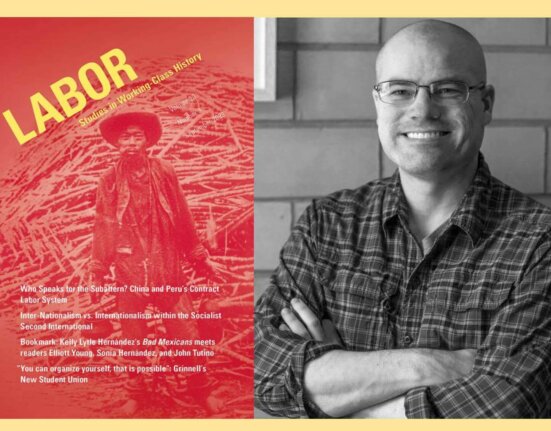In This Issue
Editors’ Introduction
The Common Verse
- Patrick Lawrence O’Keefe, “Last-Day Vendor“
LAWCHA Watch
- Talitha L. LeFlouria, “Membership Matters: LAWCHA’s New System of Recruitment, Retention, and State Coordinating“
Up for Debate
- Eric Arnesen,”Introduction”
In 1935, the civil rights leader and African American intellectual W. E. B. Du Bois published Black Reconstruction: An Essay toward a History of the Part Which Black Folk Played in the Attempt to Reconstruct Democracy in America, 1860–1880. Largely ignored by academics at the time, the book attracted favorable attention from black readers; in the past half century, the classic has found an appreciative audience among historians who take inspiration from Du Bois’s arguments and passion. Up for Debate invites four scholars—Brian Kelly, Susan Eva O’Donovan, Tera Hunter, and Jason P. McGraw—to reflect upon the book’s origins, arguments, and evidence in light of the wealth of scholarship that has appeared over the past several generations. Du Bois’s purpose and approach, the extent to which his arguments have been sustained or modified, the book’s influence on modern scholarship, and the applicability of Du Bois’s insights to studies of emancipation beyond the United States are questions that are discussed.
- Brian Kelly,”Du Bois’s Prolific “Error” and the Break with “Color-Blind” Orthodoxy“
- Susan Eva O’Donovan,”Slaves: America’s Working Class“
- Tera W. Hunter,”Where Is the Emancipated Family?“
- Jason P. McGraw,”A Tropical Reconstruction“
Arts and Media
- Richard Wells, “The Labor of Reality TV: The Case of “The Deadliest Catch””
This article examines a reality television show about crab fishing on the Bering Sea, “The Deadliest Catch,” from three angles. First, it looks at how the content of the show, the story it tells, fits in with broader ideological patterns associated with neoliberalism. The other two angles analyze the program from the behind-the-scenes perspective of the labor that goes into its production. By uncovering the creative and editorial work that goes into the crafting of the program, a window is opened onto recent struggles to maintain a strong union presence in the TV industry. By pulling back the curtain still further and discussing the actual conditions in the crab fishing industry that the show purports to document, another window is opened, this time onto the emerging struggles of deckhands and skippers to maintain a foothold in a drastically restructured world of commercial fishing.
Articles
- James N. Gregory,”Upton Sinclair’s 1934 EPIC Campaign: Anatomy of a Political Movement”
Upton Sinclair’s End Poverty in California campaign was international news in 1934. The socialist author was running for governor as a Democrat and pledging to enact an audacious plan to rebuild the state’s economy through a “production for use” system of cooperative farms and factories. Tens of thousands joined his EPIC movement as he swept to victory in the primary and then watched in disbelief as he lost the general election. This article looks at the composition and dynamics of the EPIC movement, using new data to understand the class, ethnic, and gender profiles of activists and supporters. It attends closely to the geography of political institutions and political opportunity, showing why the movement appealed strongly to working-class voters in Los Angeles and how, in that setting, it attracted the talents of activists who were not usually drawn to left-wing politics.
- Thomas Alter, “From the Copper-Colored Sons of Montezuma to Comrade Pancho Villa: The Radicalizing Effect of Mexican Revolutionaries on the Texas Socialist Party, 1910–1917”
This article argues that differing political reactions to the Mexican Revolution, even before differences over World War I and the Bolshevik Revolution, led to the initial fracturing of the Socialist Party in the United States during the 1910s. Texas Socialists had long been at odds with the dominant right wing of the SP headed by Victor Berger over how the party should be organized. But once Mexican revolutionaries began interacting with Texas Socialists, this fight expanded from one of internal party organizing to one over how a socialist transformation of the United States should be conducted. While the Berger wing of the SP took a noninterventionist stance toward revolutionary Mexico, the Texas SP went further in calling for the Mexican Revolution to be emulated in Texas as it also challenged their white supremacist views. Through common political struggle, many white Texas Socialists came to view Mexican Americans and Mexicans not as slavish peons but as fellow fighters.







